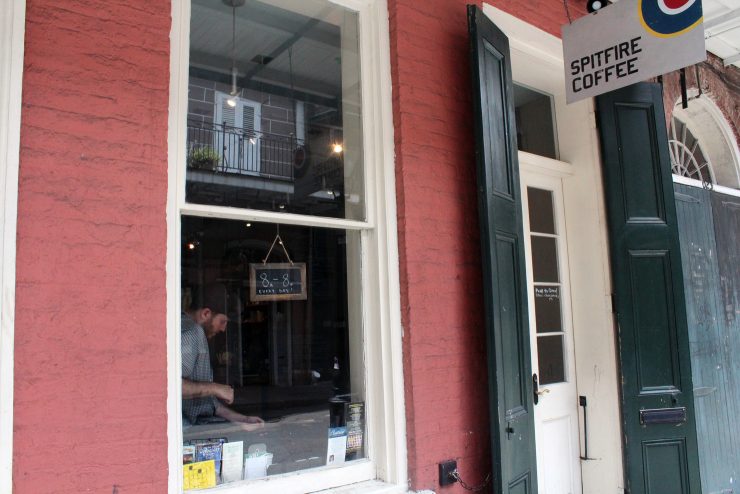
The past and present co-exist in New Orleans. On one side of the French Quarter’s Jackson Square sits Café Du Monde. Since 1862, the classic shop has been serving beignets and chicory coffee to those needing a caffeine boost and a mess of powdered sugar. Except for when iced coffee and soda were introduced in 1988, the cafe has hardly changed.
If you want a completely different coffee, one rooted in the present day, it’s a mere five-minute walk away. Exit Café Du Monde, stroll across Jackson Square, avoid getting caught up in an impromptu jazz band or magician performance in front of the St. Louis Cathedral, and duck down St. Peter’s Street. Don’t blink, or you’ll miss Spitfire Coffee.
There isn’t much room to maneuver when you walk in—Spitfire has a grand total of four seats. The shop punches above its weight due to a strong multi-roaster program, as well as reimagined specialty drinks that involve cocktail bitters such as habanero and mole.
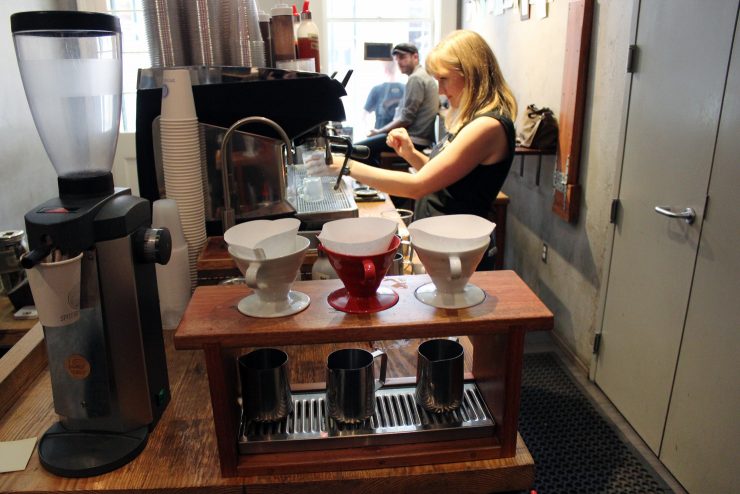
In a way, co-owner Nicholas Christian backed into a barista role. He had been working as a chef and kitchen manager in his native Portland, Oregon, and was interested in the coffee-into-espresso process—a curiosity that was stoked when he crossed paths with a Synesso tech. Christian recalls fixing an espresso machine via a Bluetooth earpiece, with the tech on the other line deciphering the machine’s different sounds. Before moving to New Orleans prior to Hurricane Isaac in 2012, he had stints with Boxcar Coffee Roasters in Boulder, Colorado as a roaster; as a chef back in Portland; and as photographer turned consultant and cafe manager for Dallis Brothers Coffee in New York. After landing in New Orleans, Christian turned back to the chef trade before meeting John Peters, the original owner of Spitfire Coffee, who offered him a consulting job.
“When I first got [to New Orleans], it was a [coffee] ghost town,” Christian says. “There was not much going on at all really [with coffee]. A lot of it was still really dark roast. Lots of bottom, lots of flavors, things like that. That’s one of the reasons I jumped at the consulting job because I thought I might have a chance to actually, slowly change coffee here.”
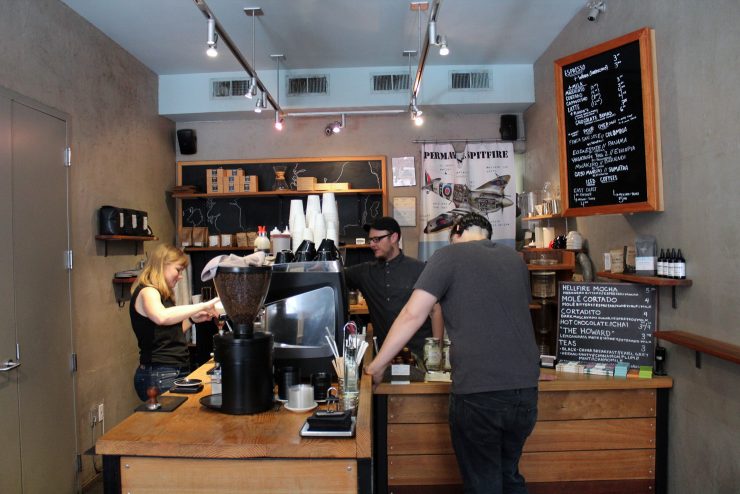
Peters’ family owned the French Quarter building, which dates back to the 1700s, and the cafe space used to be an art gallery. The cafe’s name comes from the WWII fighter plane; a Spitfire-themed banner hangs behind the register. Christian and his business partner Scott Burlington, who handles the back end of the business, bought Spitfire Coffee from Peters in 2015; an Olan Mills-esque portrait of the two owners hangs in the shop.
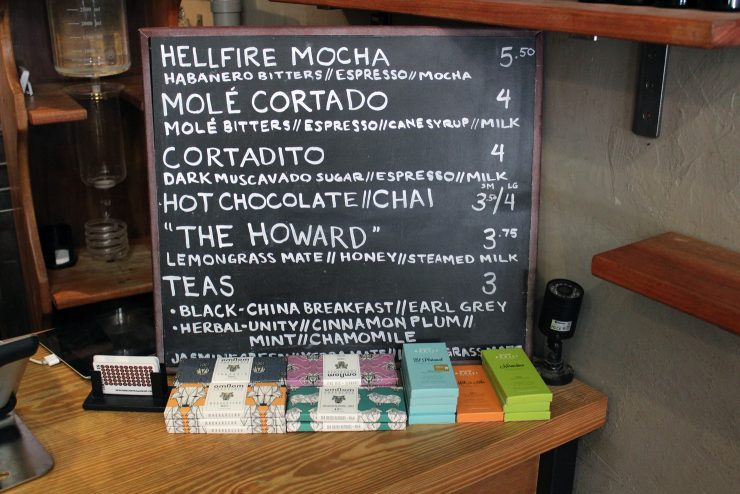
The unusual suspects at Spitfire Coffee.
Menus close to the register detail the espresso and filter drinks, plus a list of specialty drinks and craft chocolate bars. Brewed coffees are made via Hario V60, while iced coffee is available from a Toddy or a Yama. Due to the humidity in New Orleans, Christian found that redialing the espresso on the shop’s Nuova Simonelli Aurelia II had to be done many times every hour. To combat this, he sets the water-boiler temperature as low as 194 degrees F, looks for a five-to-six-second espresso drop, and ends the shot at between 27 and 29 seconds. The lower temperature and slower extraction help keep espresso’s round, balanced notes in the spotlight. According to Christian, the espresso shots are now more consistent and have a thicker, more stable crema, without as many high and low notes.
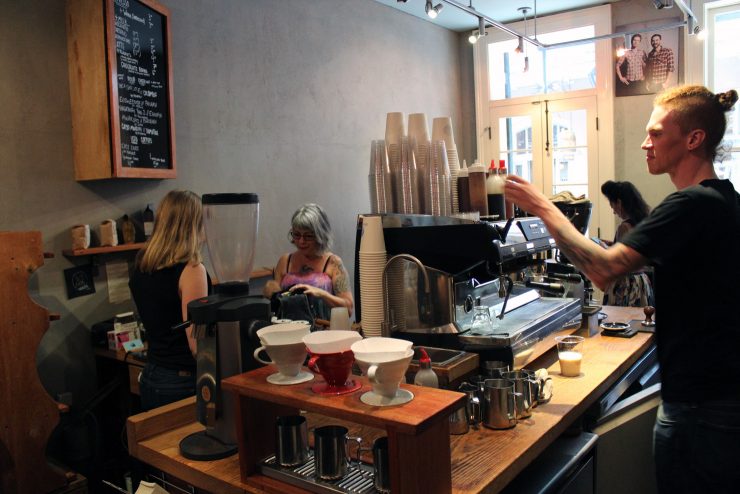
Miami’s Panther Coffee is the shop’s mainstay, while other roasters featured include Nashville’s Crema Coffee Roasters, Jackson, Mississippi’s BeanFruit, Chicago’s Passion House, and PDX’s Coava and Extracto Coffee Roasters.
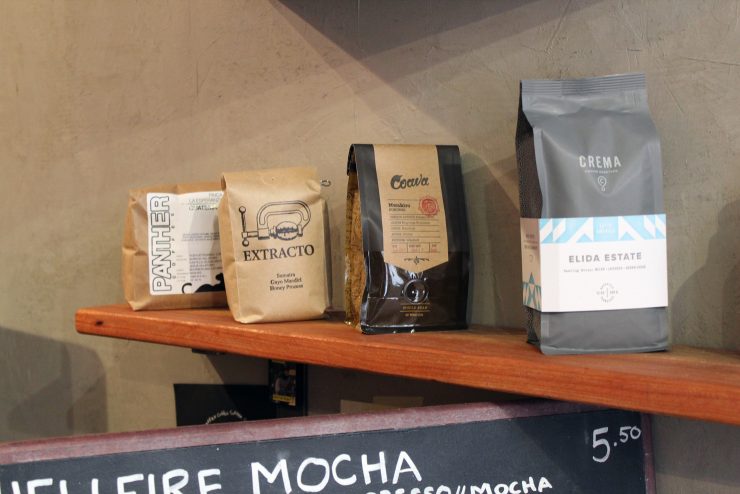
Roaster roster.
“I want to try to find roasters from each section [of the country] because we get a huge international crowd here,” Christian says. “I love it when people come in and [say], ‘Oh my god, this is the best cup of coffee I’ve had in the States. Where did it come from?’ I’m like, ‘That one actually came from Chicago. When you are in Chicago, go check this out.’ It’s great for the international market to also see that Americans don’t just have Starbucks.”
Christian also had to win over locals, who were accustomed to the city’s traditional dark-roast coffee and chicory. He said he would put chicory in the pour-overs at first, and slowly removed it over time.
Moving forward, Spitfire aims to open in another neighborhood and try to become a part of the revitalization of a different section of town—something of an extension of Christian’s desire to just change the coffee culture.
“The thing that I love about the coffee scene in this city is that this is the most welcoming, friendly coffee city I’ve ever worked in,” he says. “There’s rivalry, but it’s all friendly. It’s all fun. Everyone sends [customers] to each other’s shops. Being in a tourist city, that’s one of my favorite things to do.”
Spitfire Coffee is located at 627 St. Peter Street, New Orleans. Visit their official website and follow them on Facebook, Twitter, and Instagram.
Evan C. Jones is a Sprudge.com contributor based in St. Louis. Read more Evan C. Jones on Sprudge.
The post Spitfire Coffee: A Tiny Treasure In The French Quarter appeared first on Sprudge.

